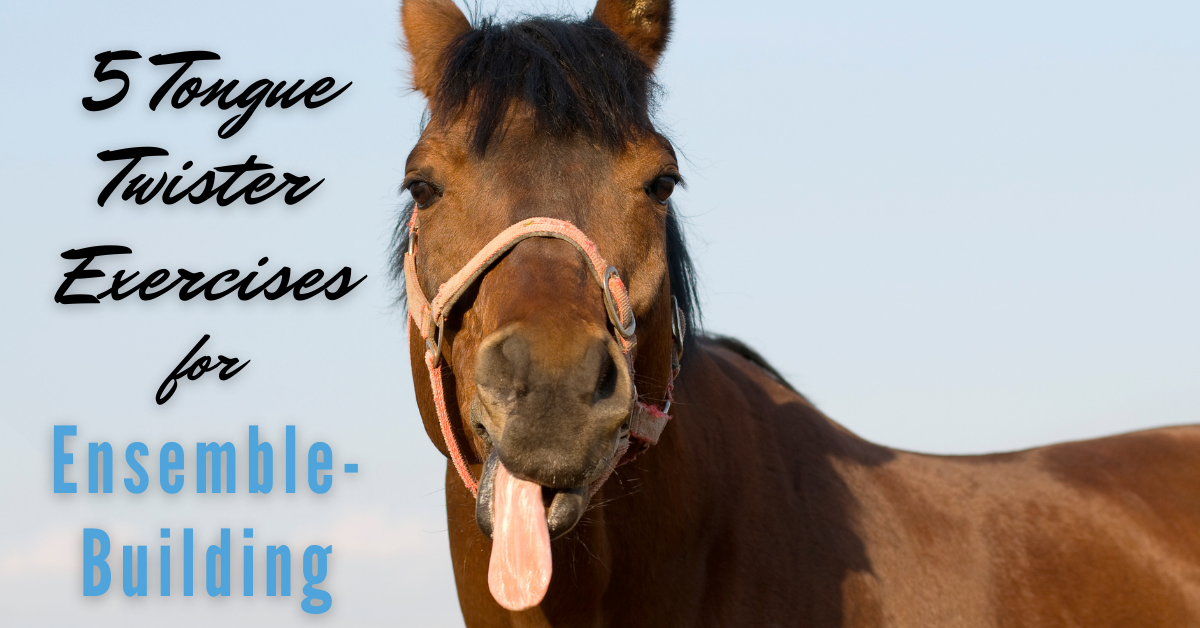5 Tongue Twister Exercises for Ensemble-Building
Tongue twisters are a fantastic tool to use in drama classes and rehearsals. They help students to warm up their voices, improve diction and enunciation, and get their brains moving!
But repeating tongue twister exercises in unison can get boring. Here are five ways for your students to use tongue twisters in a different way– to build teamwork and cultivate ensemble thinking!
Check out the following resource for a HUGE list of tongue twisters you can use: https://www.theatrefolk.com/blog/tongue-twisters-theatre-classroom/
And don’t miss out on the PDF download below!
1. Brainstorming Exercise
The students will create two lists. First, have them brainstorm for as many different tongue twisters as they can think of. Second, have them come up with a list of the benefits of using tongue twisters in the classroom/rehearsal space. How does using tongue twisters benefit you as an actor?
Bonus exercise: Divide students into groups to create a poster of the tongue twister list and benefits list to display in the classroom. Or have them do a video or PowerPoint presentation to share with younger students.
2. Listening/Matching Exercise
Start with the basics. Choose a tongue twister. Have your students pair off and practice saying the tongue twister to their partner in their own voice, focusing on over-enunciating and exaggerating the words. This will help with vocal clarity and projection.
Then have your students come back together to work on tongue twisters in a big group. Have one student say a tongue twister in a character voice (for example, as an old person with a slow, scratchy voice). Have the rest of the group match the tone and tempo for the first student. Have them try to breathe at the same spots. This encourages your students to really listen and work as a team! From there, try different voices–like a baby voice, a surfer dude voice, different accents–while continuing to focus on diction and crisp enunciation.
3. Listening/Teamwork Exercise
Have your students stand in a circle. Choose a tongue twister. Each student says one word of the tongue twister in succession. Focus on making the tongue twister flow smoothly from one student to the next, as if only one person was speaking. Try not to pause or jump ahead of the student in front of you!
4. Teaching/Leadership Exercise
This exercise can be done in pairs or small groups. Get a calendar and assign each student pair a day to teach a new tongue twister to the class. Alternatively, the pair could invent their own tongue twister to share with their peers.
5. Mixed-Bag Challenge Exercise
Here’s the ultimate challenge! The Mixed-Bag Challenge Exercise requires your students to be brave. They reach into a bag or hat, pull out a slip of paper with a prompt on it, and try to complete the challenge listed on the slip! This challenge can be done as individuals, pairs, teams, or as a whole class, depending on how competitive you want to make it.
Prompts might include:
- Use a tongue twister as the starting sentence of an improv scene.
- Divide into two teams: Who can say a tongue twister the fastest?
- Make a tongue twister into a song.
- In a group, create a new tongue twister, starting with the letter _____.
It includes 25 tongue twister challenge prompts that you can use for the Mixed-Bag Challenge Exercise, plus a reflection sheet your students can complete after the challenge.



